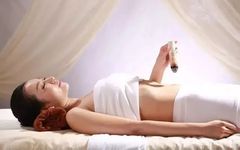Moxibustion Recipes (with Acupoint Diagram), 30 Important Moxibustion Points on the Body
High-definition Meridian Circulation Diagram, Complete Human Acupoint Collection!
Proper Acupoint Combinations; Treat Pain Tenfold! (Most Comprehensive Collection)
Moxibustion Plans for Nine Body Constitutions (Very Comprehensive)
Astonishing Moxibustion Cases from Historical Records Worth Reading!
Moxibustion Acupoint Overview
While moxibustion is beneficial, it should not be done blindly; a comprehensive knowledge of moxibustion is essential! (Collection)
The most comprehensive moxibustion disease response chart, a must-collect for moxibustion enthusiasts!
★

Moxibustion has become a popular health method among modern people due to its green, natural, safe, and side-effect-free properties. Generally, for different ailments, TCM will provide multiple acupoints; with so many acupoints, which one should be moxibusted first?

Many people may not realize that this is similar to taking Western medicine before or after meals; the timing can affect the absorption of the medicine. Similarly, the order of moxibustion acupoints plays a significant role in the efficacy of moxibustion. Today, we will discuss the order of moxibustion!
1
Moxibustion Acupoint Order
Sun Simiao, known as the “King of Medicine,” clearly recorded in his work “Qian Jin Fang”:Moxibustion should follow the principle of first yang then yin, first left then right, and from top to bottom.
How are the various parts of the human body classified as yin and yang?
As an agricultural nation, ancient people generally lived with their faces to the soil and their backs to the sky. Therefore, TCM classifies the back and upper body as yang, while the abdomen and lower body as yin. In the theory of yin and yang, the head is yang, and the feet are yin; the left is yang, and the right is yin.
Thus, according to traditional TCM theory, the order of moxibustion is generally:
First moxibustion on the upper body, then the lower body
First moxibustion on the back, then the abdomen
First moxibustion on the head and torso, then the limbs
First moxibustion on the left side, then the right side
When performing moxibustion for daily health care, following the above methods will yield excellent results. Of course, TCM emphasizes dialectical treatment, and many methods for regulating ailments are not singular; generally, the priority is to alleviate symptoms first, such as moxibusting the Ah Shi point and other key acupoints.
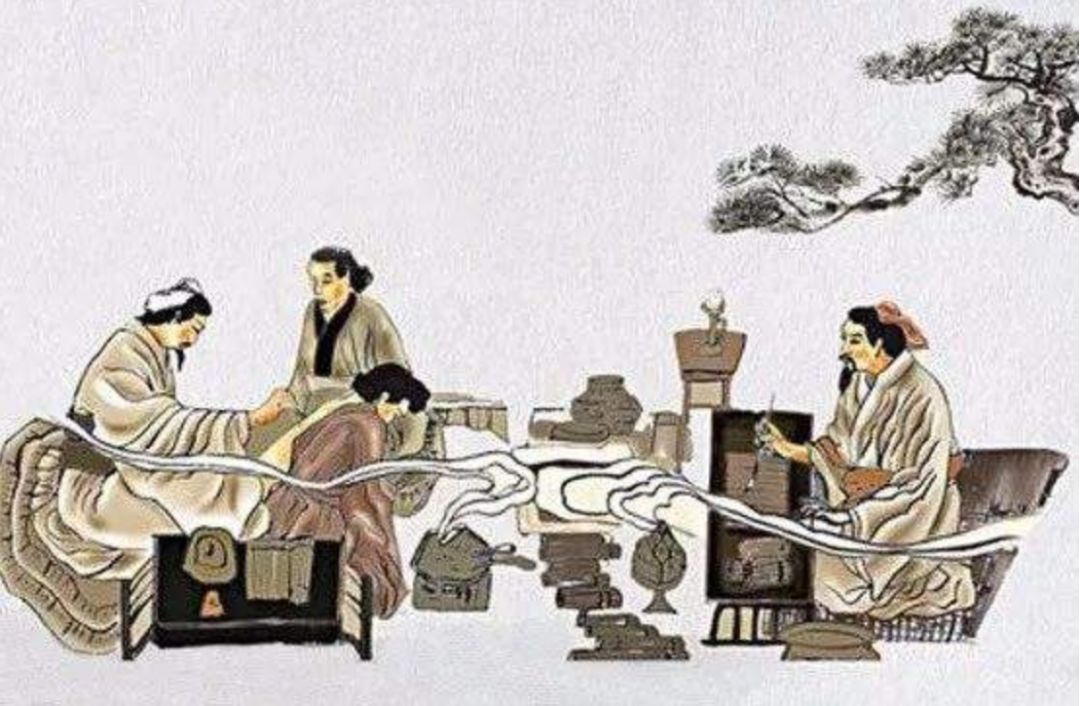
2
Optimal Moxibustion Timing
According to the “Nei Jing · Ling Shu”: Ancient people divided the day into four periods of spring, summer, autumn, and winter; morning is spring, noon is summer, sunset is autumn, and midnight is winter.
The specific time divisions are:
From 3 AM to 9 AM is the spring of the day, called “Day Spring”
From 9 AM to 3 PM is the summer of the day, called “Day Summer”
From 3 PM to 9 PM is the autumn of the day, called “Day Autumn”
From 9 PM to 3 AM is the winter of the day, called “Day Winter”
In the morning, both nature and the body’s yang energy begin to rise; utilizing this time for moxibustion can yield twice the result with half the effort, especially for those with yang deficiency or qi deficiency, such as those who are cold-sensitive, have cold hands and feet, low immunity, or loose stools.
Of course, depending on different constitutions and ailments, the timing for moxibustion also varies. For example, to regulate spleen and stomach function, moxibustion can be done from 9-11 AM, for kidney nourishment from 5-7 PM, and for insomnia, it should be done before sleep.
Generally, the best times for moxibustion for health maintenance are:10-11 AM; 2-4 PM is preferable.
3
From the Year Perspective, Seasonal Moxibustion is Best in Summer and Winter
1. From a seasonal perspective, moxibustion is most effective in summer and winter.
Summer, especially during the Three Fu Days, is the time when yang energy is at its peak. At this time, the body’s yang energy is strongest, and metabolism is vigorous. The yang energy from heaven descends, and the earth’s heat rises, creating a convergence of the energies of heaven and earth. At this time, the human body should align with the heavenly order and nurture yang.
During this time, moxibustion can not only resist summer heat and humidity but also store yang energy for autumn and winter, ensuring sufficient yang energy to combat the cold and enhance disease resistance throughout the year.
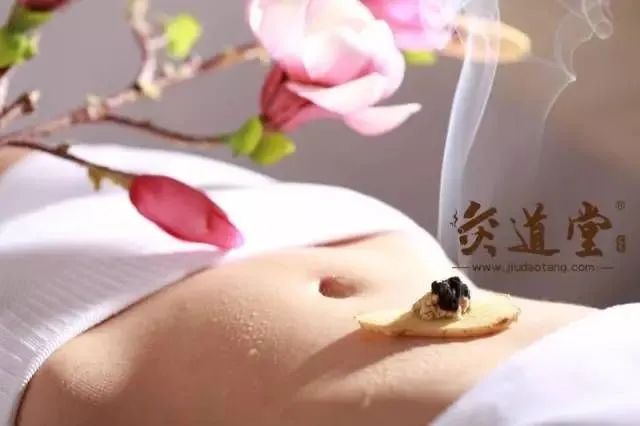
Winter, especially during the Three Jiu Days, is the coldest time of the year. At this time, yang energy is stored, qi and blood circulation is poor, skin is dry, and pores are closed. Performing moxibustion during this time can warm yang, boost qi, and enhance resistance.
Therefore, performing moxibustion every winter, especially during the Three Jiu Days, can strengthen and consolidate the effects of summer moxibustion.
2. From an annual perspective, seasonal moxibustion is most effective during the solar terms.
Humans are influenced by the energies of heaven and earth. During the solar terms, the changes in the energies of heaven and earth are particularly intense.
Spring and summer are yang, with spring being warm and summer hot; the transition from spring to summer is a shift from rising to floating. Autumn and winter are both yin, with autumn being cool and winter cold; the transition from autumn to winter is a shift from gathering to storing.
However, the transition from summer to autumn is different; summer is yang and autumn is yin, requiring a pivot. This pivot is the lesser yang, known as Shao Yang, which is the fire of the heart. When the fire energy exerts force, it can reverse the tendency of yang energy to float and cause it to gather.
Similarly, the transition from winter to spring also requires a pivot. This pivot is the lesser yin, known as Shao Yin, which is the fire of the emperor. When the fire energy exerts force, it can reverse the tendency of yang energy to be stored and cause it to rise.
Thus, the human body has two pivots, one is Shao Yang and the other is Shao Yin, both of which belong to fire. Humans use fire as a pivot because life itself is a bundle of yang energy. Life originates from the sun, which is fire; thus, life is established on fire.
The changes of yin and yang in life require fire energy to act as a pivot.
In nature, there are changes in the rise and fall of yin and yang; yang rises and yin falls, rising to the extreme and then falling, hence the two solstices (summer and winter solstice) are major nodes; the balance of rise and fall, yin and yang equal, the two equinoxes (spring and autumn equinox) are also important nodes; and the four beginnings (Li Chun, Li Xia, Li Qiu, Li Dong) are also major nodes.
The six qi changes also have six nodes, including major cold, spring equinox, minor fullness, major heat, autumn equinox, and minor snow. All of these are significant nodes and the times when the pivot needs to exert its influence.
During the solar terms, human energy also changes dramatically, and the qi mechanism can easily become stagnant, making those with weak constitutions prone to illness, or even exacerbating existing conditions or relapsing old diseases.To pass through smoothly, fire is needed to pivot.
Moxibustion uses pure yang fire, so it is said that about a week before and after the 24 solar terms is an excellent time for moxibustion to prevent and treat diseases, and should not be missed.
It is recommended that during the solar terms, moxibustion be performed on the Zhongwan (中脘), Shenque (神阙), and Guanyuan (关元) acupoints for health maintenance, which can help to eliminate dampness, dispel wind, and support yang.
1
Moxibustion on Zhongwan Acupoint
[Function] The Zhongwan acupoint is where the hand Taiyin, hand Shaoyang, and foot Yangming meridians converge, and it is a meeting point of the Ren meridian. It can regulate all organ diseases (stomach, gallbladder, pancreas, large and small intestines), especially stomach diseases, with effects of strengthening the spleen, dispelling dampness, promoting the qi mechanism of the middle jiao, and tonifying the middle qi. The stomach is known as the sea of the five organs and six bowels, hence it is said, “Those who gain stomach qi live, and those who lose stomach qi die.” Therefore, for any patient, the first step should be to harmonize the stomach qi; when the stomach qi is harmonized, the food qi is generated, making this acupoint essential for health maintenance.
[Location] The Zhongwan acupoint is located on the midline of the upper abdomen, 4 cun above the umbilicus.
[Time] Moxibustion for 10-15 minutes.
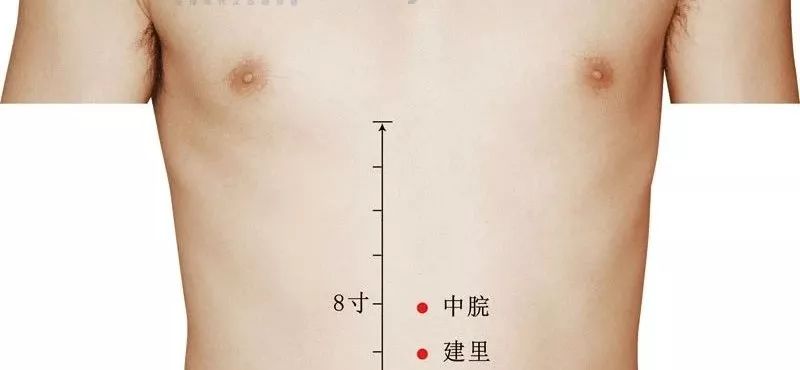
2
Moxibustion on Shenque Acupoint
[Function] The Shenque acupoint is the most secret and crucial acupoint for human life, known as the longevity acupoint. It is an important acupoint located on the midline of the Ren meridian. Moxibustion on Shenque can regulate symptoms of physical weakness and deficiency.
[Location] The Shenque acupoint is located in the center of the abdomen, at the umbilicus.
[Time] Moxibustion for 10-15 minutes.

3
Moxibustion on Guanyuan Acupoint
[Function] The Guanyuan acupoint is where true yang resides and is the place where essence is transformed. It is a major acupoint for enhancing original qi. Moxibustion on Guanyuan can promote the rise of clear yang, the descent of turbid yin, warm the original yang, and enrich the blood, thus nourishing the kidneys, consolidating the foundation, replenishing qi, and regulating the Chong and Ren meridians, as well as invigorating blood circulation.
[Location] The Guanyuan acupoint is located on the midline of the lower abdomen, 3 cun below the umbilicus.
[Time] Moxibustion for 10-15 minutes.
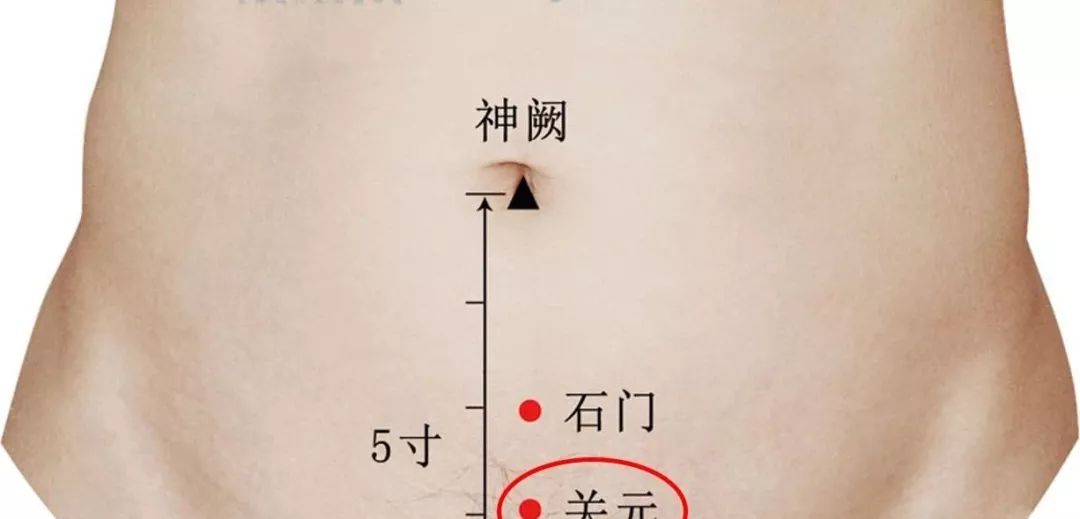
4
From the Monthly Perspective, Moxibustion is Best on the 8th Day of the Month
The first 8 days of the month represent the 8 days of yang rising, from the new moon to the waxing crescent.
During the new moon, the moon phase has not yet appeared, but the yang energy has already begun to move, unlike the waning moon which signifies the end of yang. This is the beginning of yang. Although it is not yet visible, the yang energy is entirely different.
At this time, it can be associated with the Kun hexagram, but it is at the end of Kun, the initial movement of yang. During the waxing crescent, yang energy begins to rise, and the moon phase will become visible, hence it is associated with the Zhen hexagram, which signifies the beginning of yang energy.
The first quarter moon, which is the 8th day of the lunar month, has a half-dark and half-bright moon phase, where yin and yang are balanced. However, although the moon phase is bright, it is still deficient, hence it is associated with the Li hexagram, which represents the peak of yang energy. This understanding is based on the later heaven bagua.
Therefore, from Kun to Li, this is the time when the lesser yang begins to rise, coinciding with the first to the eighth day of the lunar month, making it the most suitable time for moxibustion.
5From the Daily Perspective, Moxibustion is Best Around Noon
According to the “Nei Jing · Ling Shu”: Ancient people divided the day into four periods of spring, summer, autumn, and winter,morning is spring, noon is summer, sunset is autumn, and midnight is winter.
The specific time divisions are:
From 3 AM to 9 AM is the spring of the day, called Day Spring
From 9 AM to 3 PM is the summer of the day, called Day Summer
From 3 PM to 9 PM is the autumn of the day, called Day Autumn
From 9 PM to 3 AM is the winter of the day, called Day Winter
In the morning, both nature and the body’s yang energy begin to rise; utilizing this time for moxibustion can yield twice the result with half the effort.
It is worth noting that after 11 PM, unless in an emergency, moxibustion should not be performed.
From 11 AM to 1 PM is noon, which is the time when the heart is active. The heart belongs to fire in the five elements, and there is an ancient saying, “Zi Wu Jue, Mao You Gong,” thus, noon is also not suitable for moxibustion; if moxibustion is performed at noon, it can easily lead to excessive heat.
Generally, the best times for moxibustion for health maintenance are: 10-11 AM; 2-4 PM is optimal.
Of course, depending on different constitutions and ailments, the timing for moxibustion also varies.
This is closely related to the operating times of the twelve meridians. In modern times, a day is 24 hours, while in ancient times, it was divided into 12 time periods, each corresponding to a specific meridian. This means that each time period has a meridian that primarily functions and plays a major role in the body.
The 12 time periods are: Zi, Chou, Yin, Mao, Chen, Si, Wu, Wei, Shen, You, Xu, and Hai; Zi is from 11 PM to 1 AM, Chou is from 1 AM to 3 AM, Yin is from 3 AM to 5 AM, Mao is from 5 AM to 7 AM… Hai is from 9 PM to 11 PM, completing a full day.
For example, if there is a problem with the lungs, one cannot simply wake up in the middle of the night to perform moxibustion; at this time, the relationship between the exterior and interior meridians, or the relationship between two meridians with the same name, must be considered.
For instance, the lung meridian and the large intestine meridian are a pair of exterior and interior meridians, like a couple, but the large intestine meridian operates from 5 AM to 7 AM, which is not suitable for moxibustion.
The lung meridian is the hand Taiyin meridian, and the foot Taiyin meridian is the spleen meridian; the lung meridian and spleen meridian have a same-name relationship, like brothers. The spleen meridian operates from 9 AM to 11 AM, making it suitable for moxibustion to treat lung-related issues.
The lung belongs to metal in the five elements, and according to the principle of mutual generation and restriction in the five elements, earth generates metal, and metal generates water. Following the principle of “if deficient, supplement its mother; if excessive, drain its child,” if the lung is in excess heat, moxibustion can be performed during the time when the kidney meridian operates from 5-7 PM, as the kidney belongs to water.
Other principles are similar and can be extrapolated. In fact, it is not a matter of whether morning or evening is better for moxibustion; the key is to look at what issue you are trying to resolve.
6
Precautions for Moxibustion
1. Extreme fatigue, excessive hunger, overeating, drunkenness, profuse sweating, and unstable emotions are not suitable for moxibustion.
2. Certain infectious diseases, high fever, during coma, convulsions, or extreme physical weakness, such as emaciation, are contraindications for moxibustion.
3. Do not drink cold water or eat cold food during moxibustion; doing so is like extinguishing the fire of moxibustion, which is not conducive to disease treatment.
4. It is best to drink a cup of warm water above body temperature before moxibustion. After moxibustion, it is advisable to drink a cup of hot water around 60 degrees Celsius, slightly hot to the mouth.
5. If you wish to wash your hands immediately after moxibustion, use hot water above body temperature, around 50 degrees Celsius. If it is not a wind-related disease, cold disease, or postpartum wind disease, you can use cool water 30 minutes after moxibustion; however, in principle, do not rush to use cold water.
6. It is best to take a shower 20-30 minutes after moxibustion; at this time, the meridians are generally in a state of recovery after moxibustion, and the heat from moxibustion is gradually dissipating and being utilized, making a hot shower feel very comfortable.
Moxibustion Tips:Preventing Dizziness from Moxibustion
Dizziness from moxibustion is rare, but when it occurs, symptoms may include dizziness, blurred vision, nausea, pale complexion, palpitations, and sweating, and may even lead to fainting. If dizziness occurs, stop moxibustion immediately, lie down and rest, and apply gentle moxibustion on the Zusanli (足三里) point for about 10 minutes.
☞☞ Join the [Beauty Industry Practitioners WeChat Group] to exchange and learn with beauty professionals nationwide! Please click here
